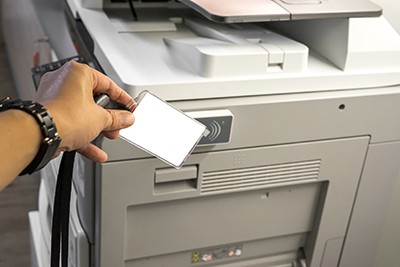Security Risks From Printers - Know Your Risk
Imagine credit card numbers for all of your customers and how valuable they are to your business. Now think about how valuable they would be if they...

Many businesses do not regard printers and multifunction devices as IoT equipment. As a result, hackers can quickly access your company network using printers connected directly to the internet. Unsecured office printers and multifunction printers expose your company to data breaches, malware, and compliance issues. This post will address the main problems with printer security and how to fix them.
In March 2022, the hacking group Anonymous hacked hundreds of printers in Russia to spread anti-propaganda information about the war in Ukraine. They printed thousands of pages filled with messaging about the war that is not legal to discuss in Russia. They also provided information on bypassing censorship in Russia by using the Tor browser.
Securing your business from cyberattacks is critical, with security breaches at historically high levels. While many IT departments focus on servers, PCs and networks, printers remain an easy avenue for bad guys to enter your networks and cause havoc. Ultimately, printers are endpoints on your networks. They are connected to the internet and as vulnerable as any other device on your network.
Securing printers need not be a complicated headache. Follow these industry best practices to take control of printer security in your business and protect your printers.
Unsecured printers have quickly become a popular entry point for hackers into businesses. Implementing these best practices can help your company keep your data secure.
If you aren't sure where to start with printer security, a reputable print provider, like Fraser, can help you. Fraser offers a complete print environment assessment that includes security recommendations. Our review can also recommend the right equipment and software solutions to save you money on printing. Contact us today to get your free assessment.

Imagine credit card numbers for all of your customers and how valuable they are to your business. Now think about how valuable they would be if they...
We often hear about cyberattacks where criminals hack into a network and steal valuable information from companies. But it is a well-known fact that...

Introduction In today's digitally connected world, ensuring the security of your company's IT infrastructure is a top priority. However, many...